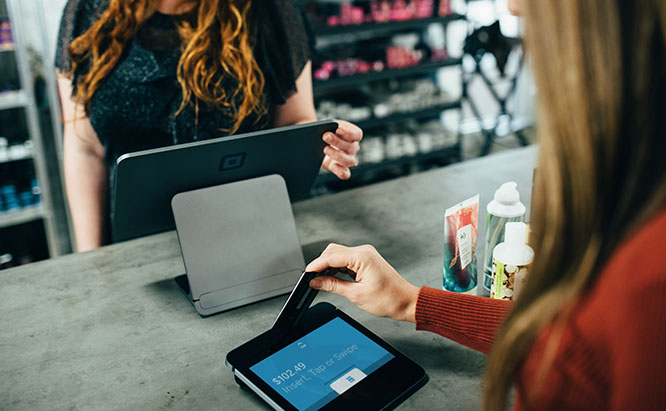They say money makes the world go ’round. But once upon a time, the benjamins, black cards, and mobile apps that we all know and love didn’t exist.
So what ran the economical world way back when and what does the payment of tomorrow look like? Well, buckle up! We’re going to explore which currencies dictated the past and ponder the finance of the future.
Bartering Before
Before value was bestowed upon the bill or coin, “payment” consisted of exchanging goods and services within a bartering system.
It worked like this:
Instead of trading money for food and other necessities like we do today, people would offer their services in the form of labor for items like clothing or tools. Or, they would exchange items or livestock they needed less than that of whatever they were trying to get. The goal of this system was to satisfy both parties’ wants and needs.
Cue the Coins
Along Came Bills
The earliest iteration of the bill was made out of leather. While inventive, this material was cumbersome because animal skin banknotes could’ve been as large as 1 square foot. Imagine folding that into your wallet!
Eventually, the Chinese invented paper money. While this form of currency was significantly more efficient at keeping than leather, the paper bill was not without its undesirable setbacks. Paper currency was frequently met with inflation and production challenges. Consequently, the use of paper money fluctuated throughout ancient history.
Going Gold
In the dawn of the 19th century, gold and silver dollars became the standard currency in Europe. Europe soon transitioned into backing banknotes with the value of gold.
Once the Federal Reserve came into existence in 1913, the United States also adopted the practice of backing their U.S. dollars with gold. This practice ensured that bills and checks would be redeemable for gold.
Gold as a currency standard was eventually abolished in the U.S. as the national gold supply dwindled. While Americans could no longer cash in bills or checks for gold, the U.S. allowed foreign governments to trade their dollars for gold until the seventies.
Presenting Plastic
The plastic credit card reared its head in the early 20th century. Credit cards were doled out first by gas stations and department stores, allowing customers to “buy now and pay later.” Of course, this system was a catalyst for the Great Depression, as many consumers raffed through more credit than they could afford to pay back. This epitomized convenience in the worst way.
According to PocketSense, the first debit card was issued by The First National Bank of Seattle in 1978. Six years later, Landmark launched the first nationwide debiting system. By the late nineties, debit card usage eclipsed tedious check writing. Using debit was more convenient than relying on credit because it was impossible to spend money that you didn’t have—because what’s more inconvenient than debt?
On the Go with Online & Mobile Payments
Wearable Payments Walk onto the Scene
What’s next? Contactless, wearable payment devices. Wearable means of payment is slowly becoming the new standard thanks to tech such as Fitbit, the Apple Watch, and the McLear ring.
Once equipped, the consumer can hover or wave their device over a payment terminal to complete their transactions—no fumbling for a wallet or loading up an app is needed. The only thing consumers have to do beforehand is link their bank accounts to the device or transfer money onto it using an app. No sweat.
Technological advances such as mobile apps and contactless wearable payment devices allow us to witness a banking revolution forged in digitalization with convenience in mind. Of course, there is still a copper jingle of coins that live in our pockets and a wad of bills that stuff our wallets. We still swipe sleek plastic into terminals and spend cash with a tap of a button, a click of a mouse, a swipe of a ring.
As we navigate through a mixed bag of today’s payment options, we ride a wave into tomorrow’s tech. We might not know what it will look like, but considering the evolution of yesterday’s forms of payment, it’s easy to surmise that convenience will reign supreme.
Ready to simplify your finances with Quontic?
Go digital with our online & mobile banking options.





